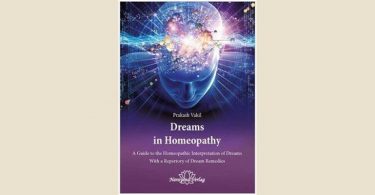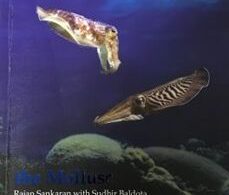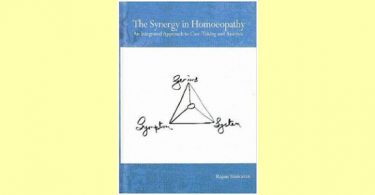Title: Conquering Fevers with Homeopathy
Author: Dr. Gajanan Dhanipkar, MD.
Published by Homeopathic Medical Publishers, Mumbai, India
Published in 2017, first reprint 2018
Hard-cover 164 pages
Reviewer Vatsala Sperling MS, PhD, PDHom, CCH, RSHom
This is an interesting book. Though fevers are a common experience for many people, there is generally an element of surprise connected with fevers, and you hear people saying, “Wow, I got fever!” There is also an element of fear associated with this normal physiological process, and the moment the thermometer registers around 100 degrees F, parents run to the best doctor in town for handling their kid’s fever.
Is there another angle for looking at fevers – for example, considering fevers as nature’s clever mechanism for mounting a hot battle that enables the body to deal with an unpleasant situation / experience by raising body’s temperature?
Dr. T.S Saggu, my childhood homeopath, did not treat all episodes of our fevers, as he knew that some fevers will simply resolve on their own, and we will come out at the other end stronger. Only when necessary, he gave gentle homeopathic remedies to help the body deal with the fever so that it did not go out of hand and get too high. So, when Dr. Dhanipkar’s book on “Conquering fevers with homeopathy” came to me for a review, I found myself already intrigued and interested.
In this book, at the very outset, Dr Dhanipkar drops a strong hint that he is going to stick with proper diagnosis, acute observation, careful questioning, detailed examination, and analysis with the help of repertory and materia medica for handling fevers effectively. He sets out in an encouraging and motivating tone, to teach students, interns and practitioners about fevers and says, “If I can do it, so can you.”
As a student, his very first encounter with fever occurred when a neighbor came knocking at his door asking for help with her daughter’s high fever. Merely a nervous and hesitating student, he did say he had no experience in treating fevers, but when the child’s symptoms matched closely with Belladonna, he did give this remedy to a remarkable outcome – the child was fever free the next day.
Many neighbors got wind of this clever and young doctor-to-be and they began appearing at his door, with some or the other acute condition that he could help with by choosing remedies based on the most fundamental of the homeopathic principles, individualization, and generalization.
He did not succumb to “one size fits all” thankfully, and understood early on that for success in treating fevers, an accurate case-taking is essential, and it comprises of observations, causative factors, patterns/ stages of fever, system involvement, physical examination, concomitants, modalities, keynotes, history, and state. Dr. Sankaran has emphasized seven main elements of observation, and they are:
- Behavior before consultation
- Behavior during consultation, patient’s pace, expression, alertness, reserved or animated disposition
- Behavior and interaction with the doctor, eye contact while talking, clinging to the doctor, suspicious, mis-trustful, or submissive
- Disorganized or structured
- Trying to be attractive and grab attention, or being irritated, shy, embarrassed, or uncomfortable
- Who the patient has brought with them, and the patient’s relation with the accompanying person
- What they are wearing and what they bring to the consultation room.
To this list, Dr. Dhanipkar adds that he also notes appearance, facial expressions, gait and behavior and the patient’s reaction to the surroundings.
In a brief case that illustrates this point, an abnormally rapid pulse-rate out of proportion to the temperature in an 8-years old boy led him to prescribe Pyrogenium 1M. In a very restless young girl, he finds a remedy (Rhus toxicodendron in 200c) that matches the restlessness of the child, who had fever, joint pain, and restlessness after getting wet during swimming.
A usually talkative child had turned mild, quiet, and thirstless during fever and he wanted to be caressed, carried, and have someone near him. He made a nice recovery on Pulsatilla.
Many causes can elicit a fever, for example, physical trauma, infection by bacteria and viruses, dietary errors, water contamination, change in weather, exposure to temperature change, humidity, mental stress, grief, anxiety, and fear etc.
These probable causes can bring about changes at the physical, mental, physiological, or pathological levels and so they are of utmost importance. A well-chosen remedy will cover the causative aspect. Our materia medicas have many remedies that cover each of these causative factors.
Spotting the uniqueness of fevers is very important too and the uniqueness is expressed in the peculiar symptoms within the stages of fever. For example, if a patient is thirstless during heat and thirsty during chills, then this constitutes a peculiar symptom. Such peculiar symptoms must be noted for chill, heat and sweat stages of fever, and needless to say, the remedy has to cover these peculiarities.
If nothing peculiar is noted in the three areas above, i.e. observation, causative factor and pattern of fever, then the next area to explore and focus is systems involvement. With a case of a woman with hepatitis, Dr. Dhanipkar helps us understand the importance of exploring system involvement in fevers.
This woman with hepatitis had fever for over two weeks and the allopathic medicines were not helping. She has enlarged liver, abdominal distention as well as elevated bilirubin and pain in her legs with all episodes of fever. Her mucus membranes were dry, and she was constipated. With Bryonia 200c, her fever as well as jaundice were conquered.
Though physical examination is an important part of approaching fever, the non-medical practitioners of homeopathy must be aware of their boundaries and not engage in any examination that even remotely looks ‘medical’, for example checking pulse or using a stethoscope, unless they wish to be known as imposters.
Concomitants can be searched and found in almost every body part from head to toe as well as mind and physical generals and the author has given a list of concomitants and their respective remedies as seen in his own practice, for example, dim vision during fever, Gelsemium.
Modalities make the patient or his chief complaint better or worse. Emotional factors, food, covering, application of hot or cold, light, sound, indoor or outdoor air, ambient temperature of the sick room, all these can make a person and his symptoms better or worse, but unless they are peculiar, they do not become an indication for choosing remedy.
Though as homeopaths we thrive on the totality of a case, keynotes are known to hold a special place in our tool kit because they draw our attention to a remedy. Keynotes can be found in any of these areas: very peculiar symptom, mental concomitant with bodily disease, precise locality, course and direction of pain and sensation, alternative symptoms, and modalities.
Even in a very busy practice, we must devote sufficient time and attention to gathering a full history. This is particularly important in cases of recurrent fevers, long standing or infective and intermittent fevers when remedies work but the fever comes back.
A case example shows the importance of history; a young person suffering from recurrent fever for several months finds his tuberculosis cured because instead of simply treating the fever, the author paid attention to history and chose a remedy that addressed the historical progression of the case.
In an acute situation like fever, do mental and emotional states matter? Indeed, they do if we can elicit the subjective and objective changes seen in the patient physically and mentally since being unwell, and such changes can indicate a remedy state.
Dr. Dhanipkar sees pediatric cases a plenty and stresses the importance of acute observation in children’s cases. Though acquiring information from parents or primary caregivers is essential, he cautions us that this feedback can rather be tainted with the parent’s / care-givers own anxieties and worries and may not completely and objectively describe the child’s situation.
Practicing in the western countries poses special challenges in this area. Many parents (due to different socio-economic reasons) place kids as young as six-weeks old in day-care facilities and many children sleep separate from their parents in their own nurseries.
In these situations, parents see the child rather very little to be able to give an objective feed-back regarding the child in his healthy and disease states, and here is where a practitioner’s acute observation will come in very handy. Dr Dhanipkar implores us to observe these:
Which part of the body is hot or cold with fever?
What is the color of the child’s cheeks?
How does the child cry?
What position does the child adopt during sleep when he is ill?
Does the child grind his teeth, salivate, perspire, jerk his limbs, weep, shriek or laugh during sleep?
On which part of body does he perspire?
What is the frequency of feeding needed?
Are there any involuntary movements?
Is the child sensitive to noise?
Does the child make any gestures while awake or asleep?
Does the child play or mix with other kids?
Does the child like to be in his mother’s arms?
All these observations can give clues to the remedies.
A homeopathic approach to fevers does differentiate between various types of fevers: intermittent, recurrent, infective, pathological, and the fever of unknown origin. In these various types of fevers, exploration of the causative factor, patterns of the stages of fever, concomitants, clinico-pathological and physiological correlations, all hold special importance, and in all these fevers, individualization is still the key that could unlock the remedy chest.
Complex fevers can test our skills at a whole different level, as these fevers can present with frequent change in pattern and symptoms of fever, and one remedy picture could overlap with the other.
Further along in the book, we can read about how to manage fevers, when and how to administer a remedy, what potencies to use and when to change the remedy. A materia medica chapter offers a brief sketch of 29 remedies that would enable us to spot the remedy when our patients come to us with fever, and we also learn about the author’s go-to books for handling fevers.
The chapter on FAQ in fevers is interesting as it educates the common reader and consumer of homeopathy about the author’s views based on his own experience in handling fevers of a wide- ranging description. The final chapter on clinic-patho-physiology of fevers is by a contributing medical physician, and covers the same topic, “fevers” from an allopathic perspective.
Since this book is based completely on Dr. Dhanipkar’s personal experience of handling fevers in his own practice, it is full of practical tips and hints that can be pitifully missing from a major, objective, and academic treatise written on the subject with 1500 endnotes.
The brevity and directness of this book are very attractive points as well. I can almost imagine Dr. Dhanipkar writing a series, “How to conquer ……x y z disease with homeopathy” and base each topic purely on his own experience. That would be a gem of a collection to look forward to, and irrefutable evidence that homeopathy works irrespective of the challenging clinical setting.





